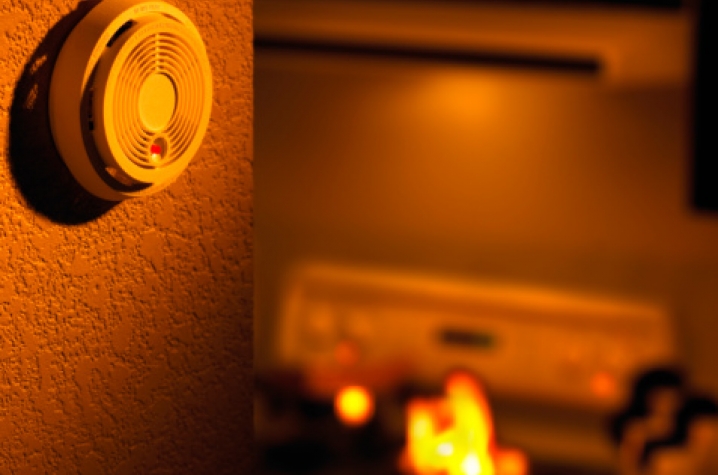Tips in Preparing Children to Escape Fire

LEXINGTON, Ky. (Jan. 7, 2011)− Many people think a fire won't happen to them. But what happens if it does? And what if there are children in the home? Will they know how to react? Tragically, more than 400 children ages 14 and under die each year in residential fires across the country.
Many adults mistakenly believe that, in a fire, children will run to or call for a parent. Others believe that a child will instinctively know to leave a burning building. Unfortunately, this is not the case. Children often hide under beds or in closets, thinking they are safe from the fire. Older children think they can control the fire. Some fear blame, so they fail to alert an adult. That's why it’s important for parents to teach their children how to act in a fire. It could mean the difference between life and death.
"Younger children frequently are afraid of the very people and things that could save them," said Sherri Hannan, coordinator for Safe Kids Fayette County. "For instance, the sound of the smoke alarm or fire engine sirens, or the appearance of a firefighter carrying an ax can frighten a child. So, it is important to educate and practice safety with them to prepare them as much as possible."
In addition, children often view fires as they've seen them on television – slow-moving flames with large, white, puffy clouds of smoke. But real fires are not like that at all. Real fires are fast, hot, dark and potentially deadly. The smoke, toxic gases and lack of oxygen can injure people and hamper escape by affecting vision, breathing and judgment. The majority of all childhood fire-related deaths are caused by smoke and toxic gases alone.
Fayette County's Safe Kids Program and Kentucky Children's Hospital recommends that parents and caregivers prepare children in case of a residential fire.
Tips for Parents
- Familiarize your child with the sound of your smoke alarm.
- Plan and practice several escape routes from each room of the home and identify a safe outside meeting place. Practicing an escape plan may help children, who can become frightened and confused, to escape safely.
- Teach children never to hide in the event of a fire. Teach them the proper way to get out of the house. Leave immediately if you hear the smoke alarm, smell smoke, or see flames. If there is smoke, teach your children to stay low and crawl.
- Teach children to feel doors with the back of their hand before opening them and to use an alternate exit if the door is hot.
- Designate an outside meeting place. It may be a tree, a street light or a neighbor's house. Make sure all family members — particularly children — know the meeting place. They should go there immediately after leaving the house and wait there until everyone from their family is present.
- Also, teach children never to re-enter a burning building. Tell children that it is most important for them to get to the meeting place — not to return for anything. They should not stop to call 9-1-1 or the fire department. A call can be placed once they have left the premises. When firefighters arrive, they should tell them if someone is inside or missing.
- Take your child to your local fire station for a tour. Many fire stations have fire education classes for children.
For more information about fire safety for children and families, as well as helpful tips and videos, call (859) 323-1153 or go to www.usa.safekids.org/fire/.
Safe Kids Fayette County works to prevent accidental childhood injury, the leading killer of children 14 and under. Its members include health and safety experts, educators, community leaders, corporations, foundations, government representatives and volunteers to educate and protect families. Safe Kids Fayette County is a member of Safe Kids Worldwide, a global network of organizations dedicated to preventing accidental injury. Safe Kids Fayette County was founded in 1994 and is led by Kentucky Children's Hospital.




